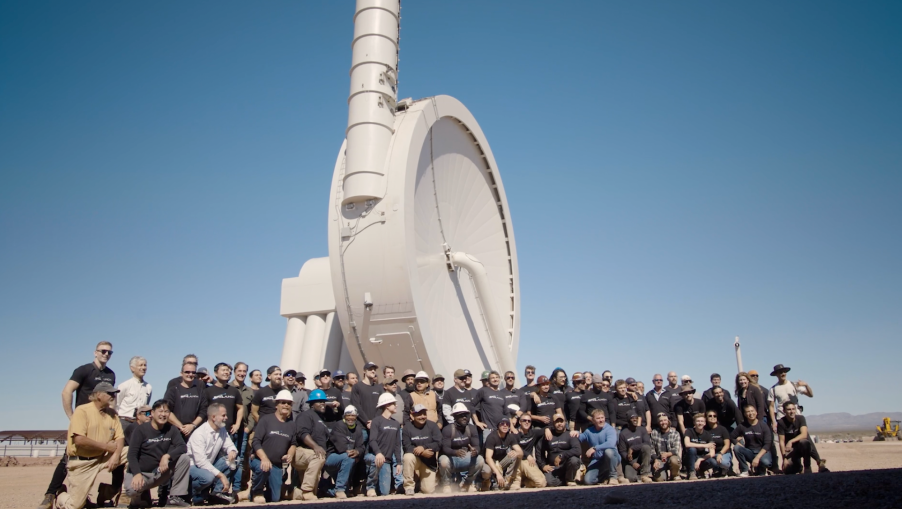
Spinlaunch Successfully Tests Suborbital Accelerator That Can “Fling” Rockets Into Space
The primary (or rather only) way to get into space was to strap it to a rocket and light it up. This method burns thousands of gallons of rocket fuel and isn’t exactly good for the environment. But Spinlaunch just ran a successful test of their “propulsion system,” which can only be described as throwing things into space rather than launching them. Spinlaunch has flown under the radar, but as their tech is improving, so too will their reputation.
The first successful test of Spinlaunch’s suborbital accelerator
Rather than a traditional propulsion system, with boosters and rocket fuel, Spinlaunch uses a massive Centrifuge to spin a rocket up to high velocity, then release it (pointing upwards). Think of it like a baseball player winding up for a pitch, only on a larger scale.
The centrifuge built by Spinlaunch stands at mighty 165 feet, taller than the Statue of Liberty. And this test launch sent the rocket up tens of thousands of feed according to CNBC. But this launch didn’t even scratch the surface of the centrifuge’s capabilities. Spinlaunch says they only used 20% of the machine’s capabilities.
But even still, the results are impressive. With hopes to spin rockets at 5,000 mph inside the vacuum chamber of the centrifuge, that means the rocket was going roughly 1,000 mph, well over supersonic, before exiting the tunnel. But best of all, this method for launching rockets will save space-faring companies an extreme amount of money.
How this orbital launcher can save rocket and satellite manufacturers money
The key is that this centrifuge doesn’t use any rocket fuel, or any emissions-emitting energy for that matter. All the energy is kinetic, meaning no propulsion was required. Instead, the rocket is spun up for hours, starting at a crawl. Eventually, enough energy is built up to fling the rocket into space without the need for any propulsion. Though, Spinlaunch does plan to incorporate rockets with their system, to increase range and maneuverability in space.
That means you won’t need heavy rocket boosters or expensive rocket fuel to get a payload to orbit. According to Tesla, it costs $16 million to build their reusable Falcon 9 rocket, and another $200k to gas it up. This program would nearly eliminate fuel costs, and significantly decrease the cost of the rocket.
Spinlaunch’s first test, however, is just the start. The company plans to build another orbital launcher three times the size of this prototype. It’ll be more powerful, spinning rockets faster than this version. But there’s a good reason it’ll never be used for flying passengers to space.
The Spinlaunch will never be used to launch people

Sure, the Spinlaunch rocket has a payload capacity of 440 lbs, so there’s room for people. But imagine you’re in a vacuum chamber for five hours, spinning at thousands of miles per hour and experiencing about 10,000 gs of force. Considering that humans have a g force tolerance of nine, you’d die immediately. This is one of the many reasons jumping to hyperspace will likely never happen, at least not for humans.
But for objects such as satellites, which can be reinforced and strengthened, this method is wonderful. After all, why would you want to spend millions of bucks to launch a small satellite, when you could do it for a fraction of that and burn less gas in the process?
In 2020, we sent 114 rockets to space and launched 1,300 satellites. But with this new technology, satellite launches will only grow, getting smaller companies into space for less money.


